As any producer knows, there is no standard meaning of high definition. Broadcasters, including the BBC, Sky, Discovery and National Geographic, issue different specifications depending on what formats they use as broadcast quality HD. There's also the debate about whether what broadcasters transmit as HD is actually the best quality HD available.
The debate centres on the broadcast of interlaced, or progressively scanned images and it has been raging in engineering circles for nearly a decade.
Until recently, it's been an academic issue because the technology to facilitate the highest form of progressive images didn't exist. That debate is now reopening with discussions among broadcasters, playout facilities and post-producers about whether the benefits of full HD outweigh the cost and complication of an upgrade.
Basically, what is currently broadcast as HD in Europe is a compromise between resolution and frame rate, which was decided on six years ago when investment decisions were needed to kick-start the roll-out of HD channels.
According to William Cooper, chief executive of broadcast consultant Informitv: “The use of interlaced scanning formats in high definition is a hangover from analogue television which has no proper place in the digital world. Now that we have HD, there is a quest to improve quality further, with even higher resolutions and faster frame rates. Unfortunately, we may have to live with interlaced video for some time.”
Similar arguments are heard from playout provider Red Bee Media. “In many ways interlacing is unsuitable for the digital era,” says Dr Sue Farrell, head of architecture. “Broadcasters have traditionally been tied to specific standards for resolution and frame rate. These remained the same in the analogue world for decades. In the digital era we can be much more flexible.”
This is definitely a technical topic that requires reference to some complex terminology. BBC HD and Sky HD, for example, broadcast at 1080i/25 where 1080 refers to the number of lines per frame, the ‘i' stands for interlaced and 25 is the number of frames per second (Hertz), or the rate at which the picture is refreshed.
Gold standard
An alternative standard for both broadcasters is 720p/50, where 720 refers to the number of lines per frame, the “p” stands for progressively scanned and 50 is the number of frames per second, which has fewer lines (analogue TV has 625 lines) and in theory a reduced picture quality. In practice, progressively scanned 720-line images provide a more stable picture than interlaced ones, and subjectively picture quality is at least as good as 1080i. The gold standard for HD is a combination of the two - 1080p/50, that is 1080 lines, progressively scanned at 50 frames a second.
“The arguments to move to 1080p are clear,” says Andy King, head of technology, BBC Resources. “The main problem with interlaced pictures is that they are very, very difficult to compress, whereas compression technologies [such as MPEG4] have now advanced so much that progressive images are far easier to compress. In a multichannel world where bandwidth is at a premium, this allows you to get more for your money.”
King also says there's no doubt progressively scanned images deliver better picture quality. “What's more, that picture quality is best viewed on flat panel displays, which is what most people will view content on at home.”
Flat-screen displays have high refresh rates of up to 100Hz, which allows the viewer to see more detail. Interlaced pictures tend to smear on flat screens.
Optical formats such as Blu-Ray DVD, on which premium content such as movies and console games are distributed, support progressive imaging. Another plus is that 1080p/50 is an attractive production format as it can be used to derive the lesser-quality HD version 1080i/25 and 720p/50 while maintaining a master version in the highest quality format.
As broadcasters compete to offer the most channels in high definition, offering 1080p is the next step.
However, notes Cooper, the broadcast industry is now “lagging behind” the capabilities of consumer displays. “There's still limited production equipment to deliver full progressively scanned HD,” he says.
The European Broadcasting Union has pushed for 1080p/50 as a universal broadcast standard, despite being forced to recommend 1080i or 720p as the most cost and bandwidth-efficient option to get HD services up and running.
The problem is the 1080p format uses higher frame rates with twice as many lines per frame, thereby doubling the amount of data. Overcoming this technologically has only recently become possible, and a full 1080p/50 acquisition and production chain won't exist for several years.
Richard Mills, chief engineer of facility On Sight, explains: “1080p/50 requires a whole new range of studio equipment including cameras, vision mixers, storage, edit and contribution links, since it doubles the current data rate from 1.485Gb/s to 3Gb/s.”
A new 3Gb/s standard for routing 1080p video from the camera head into outside broadcast trucks and around broadcast facilities was ratified by standards body the Society for Motion Picture and Television Engineers (SMPTE) earlier this year. Manufacturers responded by rushing to issue 3Gb/s kit upgrades.
Cabling networks
“The 3Gb/s standard is all about increasing the capacity of the ‘glue' or cabling infrastructure,” explains Mills. “It is possible to pass high-bandwidth video around now, but you would need dual-link (double) coax cables everywhere and double the routing matrixes. This is expensive and can cause problems with synchronising the video transported over both cables. 3Gbit/s solves that by enabling the transport of 1080p/50 over a single cable.”
Sony and Thomson Grass Valley are able to produce a full 1080p/50 signal using dual link technology. Sony recently became the first manufacturer to release a 3Gb/s upgrade to one of its main HD -cameras - the HDC1500.
Outfitting facilities with fibre-optic cabling is another expensive option, says Simon Gauntlett, technology director at the Digital TV Group. “Alternatively the signal can be compressed using technologies like [the BBC devised] Dirac codec, which enables the throughput of 1080p over existing 270 Mbps SD infrastructure.”
According to Steve Nunney who runs test and measurement equipment vendor Hamlet, 3Gb/s comes at a price. “When budgets are under pressure, broadcasters and facilities will have to decide when 1080p/50 will be a real requirement.”
King says a migration path to 1080p/50 “is at the forefront of our thinking” at BBC Resources, but he is concerned.
“When broadcasters or facilities shop for new technology, they look to depreciate the cost over a certain time. When buying SD kit we budgeted for a seven-year period to recoup investment. The life cycle of our current HD kit has been shortened because something new is always coming in.”
Nunney stresses that the 3Gb/s data rate demanded by 1080p/50 means everything is running at the limits of what is physically possible. “That will create real challenges for systems engineers,” he says. “Even cabling will need to be carefully selected and installed - the sort of neatly curved and clipped rack wiring that has been regarded as good practice in the past simply will not work at 3Gb/s data rates.”
Nonetheless, it seems inevitable that production will move to progressive scanning as equipment becomes more widely available.
“This will protect investment in programming for future use,” says Cooper. “Anyone investing in new facilities should be thinking in terms of progressive formats and higher frame rates.”
Currently there is no market for 1080p/50, but broadcasters and facilities are having to make an economic decision now on the commercial advantage a better quality HD transmission may give them in future.
BSkyB has taken the opportunity to outfit its new studio and playout complex at Osterley, “targeting 1080p/50 as the production format” says Troy Smith, technology platforms director. The facility is designed for Sky's sport and entertainment programming and will come on stream mid-2011. Sony will design the installation, but won't specify kit until 2010 in the meantime saying 1080p/50 is “aspirational”.
Thomson Grass Valley also sees “definite interest” in 1080p. “The main question is at what cost and what time-frame broadcasters will migrate,” says Marcel Koutstaal, product management director. “The demand will be driven by consumers and their desire for a better quality picture and from that broadcasters will derive a business model.”
Sport focus
As with the first generation of HD, the driver for 1080p/50 is content that will deliver a noticeable improvement to consumers' viewing experience - sport being the obvious genre. Fortunately, the progressive format and higher frame rate is optimal for reproducing fast action and especially slow-motion detail in sports.
“Like everything else, it will be the money-spinning genres that drive this particular technical innovation,” says Nunney. “Progressive pictures are ideal for sport and sport is the biggest driver of audience subscriptions, so that's where we will see the first big impact.”
Like most of the UK's OB firms, Arqiva Outside Broadcasts takes its investment cues from Sky Sports. According to Arqiva OB managing director Mick Bass: “The internal routers and matrixes of our latest HD trucks are fully capable of handling the 1080p/50 format. We're just waiting for 3G-capable cameras and vision mixers to complete the circuit.”
Programming is initially likely to be limited to movies, which are produced in a progressive frame format, typically at 24 frames per second. The film industry has adopted 1080p/24 as a mastering format. This “filmic look” is also popular for HD drama productions, many of which are already shot 1080p at 24 or 25fps (albeit transmitted interlaced) while sequences in natural history programmes routinely use frame rates of 50, 60 or higher to capture high detail and super slow motion.
Satellite broadcasters in the US are already looking at 1080p broadcasts with the Dish Network claiming to be the first to offer programming in the format.
Of course, 1080p/50 is unlikely to be the last word in high definition as anyone who saw the demonstration of Super HiVision (SHV) at IBC will testify. SHV has a minimum of 16 times the resolution of 1080p.
“It may be some time before we see that in the home, but in the meantime we may see 2,000 line formats,” says Red Bee's Dr Farrell. “The BBC has also questioned whether current frame rates are adequate, showing the benefits of 100 frames per second or even higher.”
There was a belief that once migration to HD was complete, from 2010 onwards, changes to the basic infrastructure would be largely cost-neutral.
“Not any more,” says Andy King. “HD will never be cost-neutral. There will always be new technologies emerging.”
Interlaced vs Progressive
Interlaced scanning effectively splits the transmitted picture in half, -transmitting the odd lines, then all the even lines, interlacing them together in the TV set. Progressive scanning transmits all the lines at the same time.
In the progressive format, the complete image updates every 1/50th of a second and in the interlaced format, only half of the image updates every 1/50th of a second - this effectively throws away half of the picture's resolution.
“1080P 50 is the best of both worlds,” declares the DTG's Simon Gauntlett. “It offers the superior motion of progressive scanning combined with the superior static resolution of 1080 interlaced.”


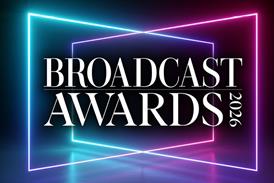
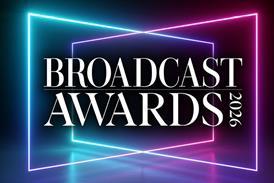
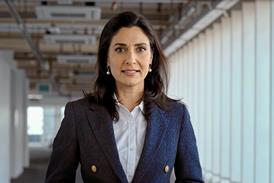


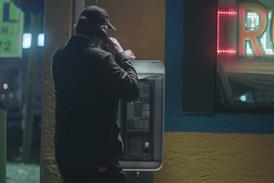
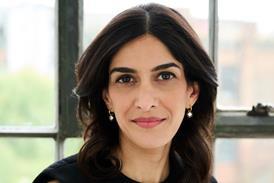
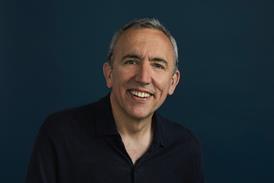

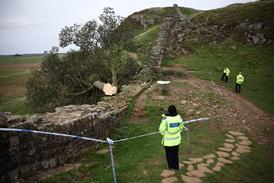
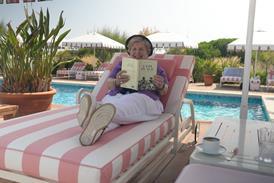







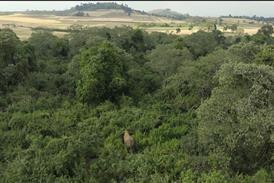
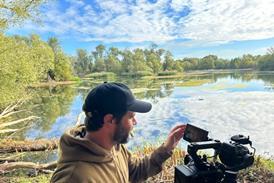
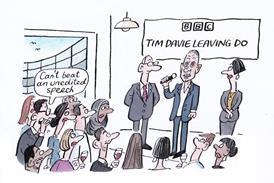



No comments yet